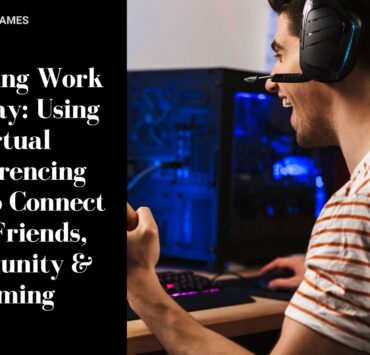Joel is a whiz with computers. When he was just…
The role of artificial intelligence has revolutionized the manner in which we compose written material. Tasks that once took hours can now be completed in minutes, and sometimes seconds! Writers, marketers, and students have learned that solutions such as ChatGPT can generate text that seems finished at first sight. Yet, as AI writing seeps into our lives, another question generally comes right after it. How do we know if that text was written by a human or a trained algorithm pretending to be a human?
When we put these detectors to the test, we see that it is a tricky situation. Some will provide quick and clear output, but they will lack rigor. Others will examine each sentence and provide (somewhat overwhelming) statistics. Each tool will produce different accuracy rates, not only for instrument type but also for text type. It is easier to assess the authorship of an essay that includes personal stories than a webpage that has a neutral marketing voice. That is why the context of the accuracy talk matters. If the detectors cannot understand different contexts, their usefulness will diminish quickly.
One platform that consistently receives attention in these discussions is Smodin.io. It has become a favorite among writers and educators who want both simplicity and precision. The tool provides clear percentages that indicate the likelihood of AI authorship. What makes it stand out is the balance between usability and trustworthiness. You do not need technical knowledge to understand the results. At the same time, the system updates frequently to keep pace with new AI models. In practice, that means users can rely on it for everyday checks without drowning in data.
Table of Contents
ToggleWhy Accuracy Matters More Than Ever
The difference between a detector that is 70 percent accurate and one that is close to 95 percent is not trivial. These gaps matter in the context of a student being accused of plagiarism when they are not guilty, or a journalist being seen as someone their readers can trust. False detectors create needless conflicts. This is why businesses and schools are increasingly cautious about which platforms they adopt.
Another factor is the growth of hybrid writing. A lot of people today employ AI to brainstorm ideas or write outlines of what will be their final product. Detectors have to discern this mixture. To classify a complete text as either AI or human is to ignore a much more complex reality. The best tools flag sections of a text with explanations of why they could be viewed as suspicious. This not only increases trust in the results but also helps writers adjust their style.
Comparing the Leading Tools
When looking at detector accuracy, it helps to see how the main platforms perform in practice.
Smodin
Smodin has grown into a versatile platform that blends AI detection with rewriting and translation tools. For students and creators, this all-in-one setup means they can check a draft, refine it, and adapt it to another language without switching tabs. Its detection is competitive with other major tools, though results can vary on very short texts. Many users appreciate the balance between accessibility and range, especially when they want more than a single-purpose detector.
GPTZero
Known as one of the first widely recognized AI detectors, GPTZero still holds a strong place in education. Its sentence-level analysis is thorough, and teachers appreciate the detailed reports. However, it sometimes marks polished human text as AI. While this conservative approach can protect against false negatives, it can also frustrate honest writers.
Originality.ai
This platform combines plagiarism checks with AI detection. For editors who manage multiple contributors, that dual function is convenient.

Its accuracy against fully AI-written drafts is strong, though the interface leans more toward professional users. Beginners may find it dense, but publishers see it as reliable.
Copyleaks
Copyleaks is popular among educators for its clear reports and classroom-friendly design. Its color-coded highlights make explanations easier. While slightly slower than some competitors, its precision is solid. Teachers value the balance between accessibility and accuracy, especially when dealing with student essays.
Writer AI Content Detector
Writer’s tool is created for teams of professionals. It is most suited to shorter materials like advertisements or social media. There are several tests conducted not long ago that showed some limitations with long-form essays, etc., but the association with enterprise-level writing tools is attractive for businesses that want a one-stop shop.
What Makes a Detector Truly Reliable
Accuracy is not only about numbers. It is also about transparency. A tool that tells you a text is 80 percent AI without context leaves you guessing. Reliable detectors explain why they conclude. They point out repetitive phrasing, uniform sentence length, or unusual vocabulary choices. This context transforms results from vague suspicion into useful guidance.
Another sign of reliability is adaptability. AI writing models evolve quickly. A detector that does not update regularly will lose relevance. Tools like Smodin.io maintain accuracy by adjusting to these changes. Without ongoing improvement, even the most advanced system will fall behind.
Everyday Use Cases
The demand for accurate detectors is spreading beyond schools and publishing. Recruiters now use them to evaluate cover letters and application essays. Businesses use them to verify that their website copy feels authentic. Bloggers check their posts before submitting them to guest platforms. Even individuals sometimes run personal projects through detectors, curious to see if their style reads as uniquely human.
I once spoke with a writer who said she runs her diary entries through a detector just for fun. She likes to see how “human” her late-night ramblings appear compared to her polished essays. That playful approach shows how deeply these tools have entered our everyday routines.
The Future of AI Detection
Looking ahead, the next frontier may be detectors that identify levels of collaboration rather than simple labels. Instead of declaring text AI or human, they could show how much of a draft reflects machine patterns and how much reflects human editing. This layered approach would better capture reality. It would also encourage honesty about how we use AI rather than hiding it.
As AI models keep improving, detectors will face new challenges. The arms race between writing tools and detection systems will continue. The winners will be those who update quickly and provide clear explanations. In the meantime, accuracy remains the core measure of trust.
What’s Next?
AI detectors are becoming as important as spell check once was. Their accuracy shapes trust in classrooms, newsrooms, and workplaces. In fact, tools like GPTZero, Originality.ai, Copyleaks, Writer, and especially Smodin.io each have their own merits. None of them is without flaw, yet collectively they can help us steer through a world where humans and the written text of machines cohabitate. The value of machines may ultimately lie less in documenting the written text of machines than in reminding us of everything that makes the written text of humans worth reading. Humans interject, digress to parentheticals, and offer emotions in their writing that a machine cannot convey. If detectors guide us toward valuing those imperfections, they are doing more than analyzing text. They are helping preserve the soul of language.
Joel is a whiz with computers. When he was just a youngster, he hacked into the school's computer system and changed all of the grades. He got away with it too - until he was caught by the vice-principal! Joel loves being involved in charities. He volunteers his time at the local soup kitchen and helps out at animal shelters whenever he can. He's a kind-hearted soul who just wants to make the world a better place.






